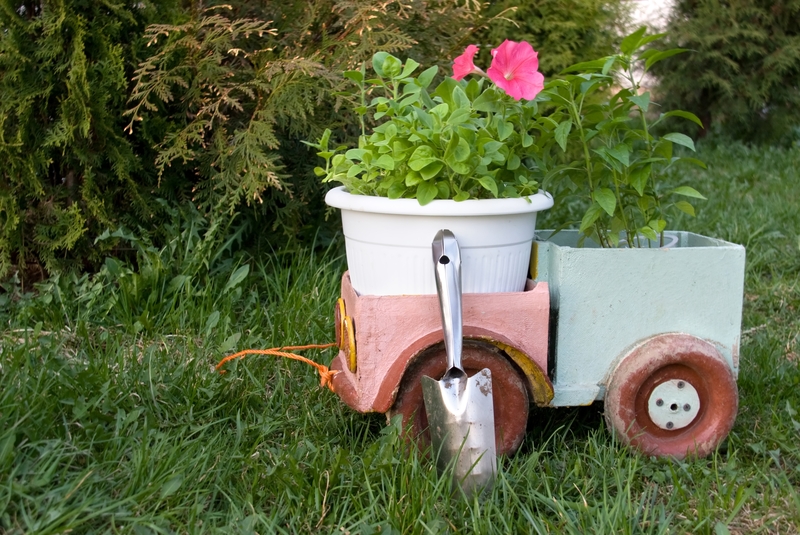Cutting-Edge Ideas to Reduce Plastic Pollution
The world is drowning in plastic waste. This modern marvel, while versatile and affordable, has come with unintended and disastrous consequences for our planet. The proliferation of plastic pollution has brought about a call for innovative and effective solutions. In this comprehensive guide, we'll explore groundbreaking and high-impact ways to reduce plastic pollution, showcasing novel strategies, technology developments, and actionable policies.

Understanding the Scope of Plastic Pollution
Before we discuss new ways to tackle the problem, it's vital to comprehend the sheer scale and impact of plastic pollution. According to the United Nations, nearly 8 million tons of plastics end up in the world's oceans yearly, threatening marine ecosystems, wildlife, and even human health.
- Over 300 million tons of plastic are produced annually worldwide.
- Single-use plastics account for nearly 50% of the plastic waste we generate.
- Microplastics have been found in drinking water, food, and even the air we breathe.
Clearly, urgent action is required. Let's delve into some of the most promising and innovative solutions to reduce plastic pollution globally.
1. Biodegradable & Compostable Alternatives
Bio-based Plastics & Polymers
Unlike traditional plastics derived from fossil fuels, bioplastics are created from renewable resources such as cornstarch, sugarcane, and cassava. These biodegradable materials can naturally decompose, significantly decreasing the accumulation of non-degradable waste.
- PLA (Polylactic Acid): A popular bioplastic made from fermented plant starch.
- PHA (Polyhydroxyalkanoates): Bacteria-produced polymers with broad applications in packaging and agriculture.
Challenges persist regarding scalability and the proper facilities for composting, but continued research may solve these hurdles.
Edible Packaging
Do you imagine eating your food package? Startups are working on edible films and wrappers made from seaweed, rice, or milk proteins. Notpla, a London-based company, has pioneered an edible bubble called "Ooho" to replace single-use water bottles for marathons and events.
2. Advanced Recycling Technologies
Chemical Recycling
Traditional mechanical recycling often results in lower-quality materials. Chemical recycling innovation--also known as advanced recycling--breaks plastics down to their molecular level, allowing for infinite recycling with little to no degradation in quality. Technologies like pyrolysis and depolymerization are revolutionizing the industry.
- PureCycle Technologies utilizes a solvent-based purification process to recycle polypropylene into "virgin-like" plastic.
- Loop Industries employs a unique depolymerization process to recycle PET plastics and polyester fiber repeatedly.
AI-Based Sorting Systems
Using artificial intelligence and robotics, recycling plants can now sort plastics more efficiently and accurately, ensuring higher recovery rates and less contamination. Google's Global Fishing Watch uses machine learning to map plastic pollution hotspots in oceans for targeted cleanup and recycling efforts.
3. New Business Models & Circular Economy Initiatives
Reusable & Refillable Packaging Solutions
One of the most effective ideas to reduce plastic waste is eliminating single-use items altogether. Companies are pioneering systems for refilling and reusing containers:
- Loop (by TerraCycle): Partners with brands to offer everyday products in durable packaging that's collected, cleaned, and refilled--much like the milkman model.
- Algramo: In Chile, this business has revolutionized neighborhood shopping by bringing refill stations for grains, detergents, and more to the community.
Plastic Take-Back & Deposit Schemes
Deposit return systems incentivize consumers to return used plastic bottles and containers for a refund, greatly increasing recycling rates. Several countries with these schemes, like Germany and Norway, achieve return rates of over 90%.
4. Ocean Clean-Up Innovations
The Ocean Cleanup Project
Led by Boyan Slat, The Ocean Cleanup has developed a passive system using long floating barriers to collect plastic debris from the Great Pacific Garbage Patch. These collected plastics are then recycled and used to fund further clean-up efforts.
Seabin and Litter Traps
Seabin is a floating trash bin that skims the water's surface, collecting plastics, oils, and other debris in marinas and harbors. Similarly, river litter traps like "WasteShark" and "Interceptor" by The Ocean Cleanup prevent plastics from reaching oceans by catching them at river mouths.
5. Plastic-Eating Enzymes & Microorganisms
Enzyme Engineering Breakthroughs
Alexandria's science fiction is becoming reality as researchers have discovered and engineered enzymes and microbes that consume plastics. For instance, PETase, found in bacteria at a Japanese landfill, can degrade PET plastics in a matter of days rather than centuries. Newer "super-enzymes" have been genetically engineered to work even faster and on multiple plastic types simultaneously.
Mycelium Decomposition
Fungi, specifically mycelium, are being researched for their ability to decompose plastics. Ecovative and similar companies are growing these fungi into packaging materials that can entirely break down post-use, returning nutrients to the soil.
6. Smart Consumer Choices & Awareness Campaigns
Education and Behavioral Nudges
While technological innovation is essential, empowering consumers with knowledge is equally important. Global campaigns like Plastic Free July and the UN's #CleanSeas mobilize millions to enact everyday changes--from refusing plastic bags and bottles to adopting reusables and proper sorting.
Eco-Labeling and Transparency
Brands are increasingly using clear labels to indicate recycled content, compostability, or zero-plastic packaging. Ecolabels and QR codes help savvy shoppers make eco-friendly decisions and reduce their plastic footprint.
7. Regulatory & Policy Innovations
Bans and Levies on Single-Use Plastics
Legislation plays a crucial role in reigning in plastic pollution. Dozens of countries have already implemented bans or taxation on plastic bags, straws, and cutlery. Policies are increasingly targeting microbeads, plastic stirrers, and even cigarette filters.
Extended Producer Responsibility (EPR)
EPR laws require manufacturers to take responsibility for the entire lifecycle of their plastic products, incentivizing the design of recyclable and minimal-waste items. This shift is gaining traction in Europe, Asia, and North America.
Global Treaties and Agreements
In 2022, the United Nations announced the launch of negotiations for a global plastic treaty--an international instrument aimed at ending plastic pollution. Collaboration across borders is essential to address this transboundary challenge.
8. Innovative Materials Research
Algae-Based Plastics and Coatings
Algae has emerged as an exciting natural resource for creating biodegradable plastics and coatings. Not only do these alternatives break down harmlessly, but their production also helps sequester CO2 and clean wastewater, delivering dual environmental benefits.
Graphene and Nanotechnology
Scientists are experimenting with nanomaterials like graphene to reinforce bioplastics, increasing their durability and functional lifespan while ensuring that marine-safe decomposition is still possible.
9. Incentivizing Sustainable Design
Designing for Disassembly
Product designers are now prioritizing modularity and ease of disassembly, allowing consumers and recyclers to separate components for recycling or repair easily. This approach simplifies the recycling stream and ensures that fewer materials escape into nature.
Minimalism and Packaging Reduction
Many brands are adopting minimalist philosophies, slashing unnecessary packaging and prioritizing reusable or compostable alternatives. "Naked" products, like those sold by Lush Cosmetics, remove plastic packaging altogether.

10. Community-Led Innovation
Plastic Bank Programs
Plastic Bank offers a valuable model for addressing plastic pollution in developing communities. Locals can exchange collected plastic waste for goods, services, or cash--turning waste into wealth while cleaning up communities.
Grassroots Clean-Up Movements
Citizen groups, non-profits, and local governments are organizing beach and river clean-ups, mapping "hot spots" using digital tools, and advocating for stronger local policies. The power of community engagement is immense and can accelerate adoption of plastic waste reduction ideas globally.
Conclusion: A Future Without Plastic Pollution
Reducing plastic pollution is no longer just an environmental imperative--it is a moral, economic, and technological challenge. Thankfully, an explosion of innovative approaches is being deployed around the world. From biodegradable materials and enzymes to smarter recycling and policy frameworks, the world is responding in creative and hopeful ways.
While none of these cutting-edge solutions to reduce plastic waste can succeed in isolation, their combined impact--supported by global collaboration, consumer consciousness, and relentless innovation--promises a cleaner, healthier planet. Whether you're a business owner, consumer, or policymaker, now is the time to take bold action and join the movement against plastic pollution.
Start today: refuse single-use plastics, support sustainable brands, participate in local clean-ups, and advocate for smarter laws. Together, we can turn the tide on plastic pollution for generations to come.